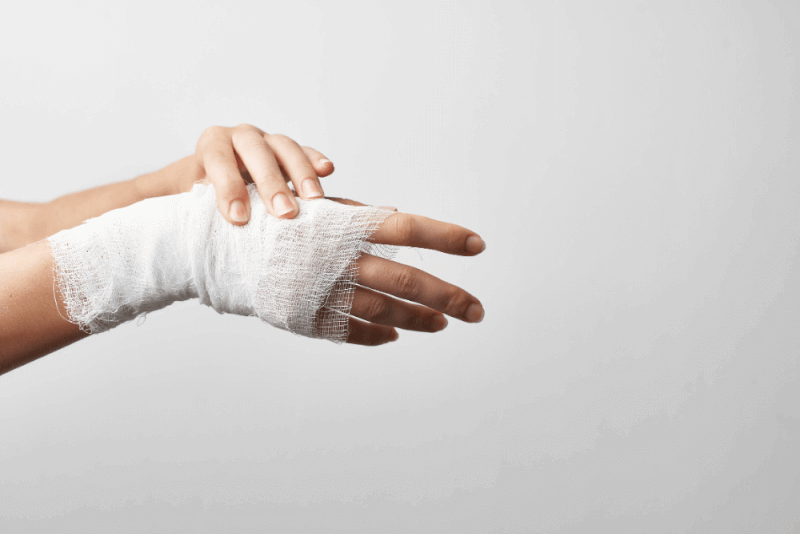What is Replantation?
Replantation refers to the surgical procedures where body parts like arms, fingers, or hands are completely separated from the body and then reattached. The goal of these surgeries is to restore as much function and sensation as possible to the detached part. In some cases, replantation may not be feasible.
In such instances, the advantages of using a prosthesis are considered. If the outcome of replantation offers less benefit than a prosthesis, the procedure is not performed. Additionally, replantation is not performed when the entire hand is severed because the chances of regaining function are minimal.
In such cases, replantation would not benefit the patient and could cause issues like pain. After replantation, it is essential to undergo physical therapy sessions to help the treated limb regain functionality.
Why is Replantation Done?
Replantation is a surgical procedure performed to reattach parts of the body that have been completely severed, aiming to restore functionality close to the original. Replantation is only performed if the body part is fully detached. In cases where the part is not fully detached, other surgical procedures are applied.
How is Replantation Performed?
Replantation surgeries consist of several stages. In the initial stage, the damaged area is cleaned. This involves processes like trimming the exposed bone ends. Next, the tendons, arteries, muscles, and nerves are reconnected. If there is skin loss, skin grafting is performed using tissue from another part of the body, and the surgery is concluded.
The patient's age is a critical factor affecting the success of replantation. Younger patients generally heal better because nerves regenerate more effectively at a younger age. The recovery time is influenced by the healing rate of nerves, which regenerate at a rate of about 2.5 cm per month. By considering the distance from the injured area to the fingertips, the time needed for fingers to regain function can be estimated. Lastly, the absence of joints in the treated area improves the chances of success.
If there are no concerns about the vitality of the replanted part, additional procedures may be performed to improve function, including:
- Tenolysis surgery to remove adhesions on the tendons
- Capsulotomy surgery to treat stiff joints
- Tendon muscle transfer, where non-functional tendons are replaced with functional ones from other parts of the body
- Nerve grafting, where non-functional nerves are replaced with functional ones
- Late-stage amputation if the treated area fails to function or causes other health issues
Which Patients Are Suitable for Replantation?
Patients suitable for replantation fall into two categories: absolute and relative indications. Absolute indications include:
- Thumb amputations
- Highly motivated patients with high intelligence and comprehension levels
- Multiple finger amputations
- Amputations in children
- Amputations at the wrist or palm level
Cases where replantation is not mandatory include:
- Amputations in older patients or those above the elbow level
- Amputations of fingers other than the thumb
- Amputations accompanied by crush or avulsion injuries
- Amputations at the distal phalanx level
Which Patients Are Not Suitable for Replantation?
Replantation is not suitable for all patients or cases involving severed body parts. Even though microsurgical techniques are used, replantation may not be performed if certain conditions are present, as the harm may outweigh the benefits. These conditions include:
- Life-threatening health conditions in addition to the amputation
- More than 6 hours passing since the body part was detached
- Multiple amputations
- Severe damage or burns on the detached body part
- Severe contamination of the wound
- The presence of systemic diseases that would prevent the prolonged duration of replantation surgery
- Diabetes, heart disease, atherosclerosis, recent stroke or myocardial infarction, smoking, or self-inflicted injuries prevent replantation.
What to Pay Attention to After Replantation?
The success of recovery after replantation surgery largely depends on the patient. The following are important considerations:
- Smoking must be avoided after surgery as it significantly disrupts blood flow, impairing recovery and causing damage to the replanted area.
- The replanted area should not be kept below heart level to avoid reducing blood flow, which can lead to tissue death.
- Postoperative physical therapy and splinting are the first-line treatments, so patients must follow instructions and attend therapy sessions regularly.
- Psychological support is necessary due to concerns about the appearance and function of the treated area.
- Patients should avoid stress and ensure adequate rest.
- The room should not be too cold, and a warm environment is preferable.
- Excessive consumption of tea, coffee, or caffeinated drinks should be avoided after surgery.
Types of Replantation
Replantation varies depending on the location of the amputation and is divided into two main categories:
Major Replantation
Major replantation is performed when the body part is severed above the level of the palm. This includes the forearm, wrist, and arm.
Minor Replantation
Minor replantation is performed when amputations occur below the palm level, typically involving the fingers.
What Happens After Replantation?
The primary goal of replantation is to restore the vitality of the detached part. The secondary goal is to restore its function as close to normal as possible. The postoperative process proceeds as follows:
- The vitality of the replanted part is closely monitored after surgery.
- Medications are used to treat potential circulatory issues that may arise after surgery.
- If all damaged tissues could not be repaired during the initial surgery, additional surgeries may be planned later.
Post-surgical conditions that may be observed in patients include:
- Sensory changes (delayed sensation, hypersensitivity, or reduced sensation)
- Shortening of the limb
- Improper or non-union of the bone
- Stiffness in joints
Complications of Replantation
Complications following replantation are more common after major procedures. These complications include:
- Infection
- Postoperative bleeding
- Multiple organ failure
- Kidney failure
- Arrhythmia
How to Preserve a Severed Body Part?
Preserving a severed body part is crucial for the success of the surgery. The detached part should be kept under the following conditions until surgery:
- First, the patient's overall health should be assessed, and bleeding should be controlled.
- Pressure bandages should be used to control bleeding, and the amputated part should be elevated. However, vessels should not be clamped unless absolutely necessary to avoid damaging them.
- Tourniquets should be used minimally and not for more than 1.5 hours.
- The detached part should be carefully cleaned with saline or Ringer's lactate. Disinfectants like betadine should not directly touch the tissues.
- After cleaning, the part should be wrapped in a moist cloth, preferably moistened with saline.
- The part should then be placed in a clean bag to prevent direct contact with water or ice, and stored at +4°C.
- It is critical to bring the patient to a healthcare facility for surgical intervention as soon as possible.
- The patient should avoid eating or drinking anything until reaching the healthcare facility.
Is There a Time Limit for Replanting a Severed Body Part?
The time limit for a severed part to remain viable depends on several factors and is generally divided into two categories:
Warm Ischemia
Warm ischemia occurs when muscles and tissues in the severed part are damaged and lose vitality due to exposure to air or lack of blood, leading to the formation of free oxygen radicals.
Cold Ischemia
Cold ischemia occurs when the severed part is cooled to +4°C and transported properly, slowing metabolism and reducing cell death, thereby preserving tissue viability for a longer period.
The maximum time a severed part can remain viable without blood flow is as follows:
- Warm ischemia for parts severed above the hand or foot level is 4-6 hours.
- Cold ischemia for parts severed above the hand or foot level is 6-8 hours.
- Warm ischemia for finger amputations is 8-12 hours.
- Cold ischemia for finger amputations is 24-36 hours.







